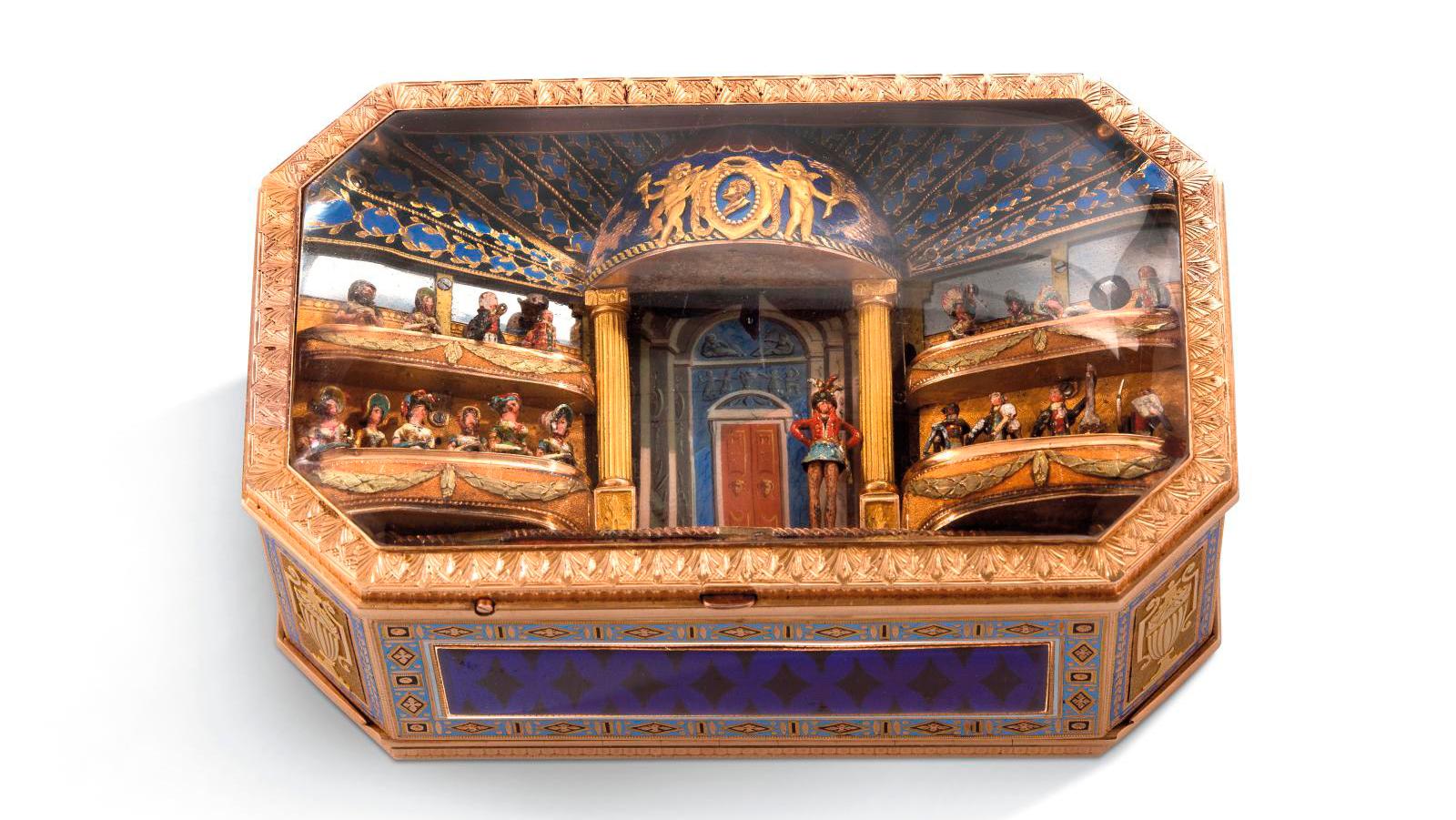A box with automatons attributed to Frères Rochat and a Maghreb astrolabe top the bidding.

Attributed to Frères Rochat, Geneva, c. 1820, music box with automatons in yellow, rose and green gold with enamel decoration; melody played by means of brass cylinders with pins, hallmark of master goldsmiths Sené & Detalla, 9.2 x 5.7 x 4 cm (approximately 3.62 x 2.24 x 1.57 in).
Result: €392,780